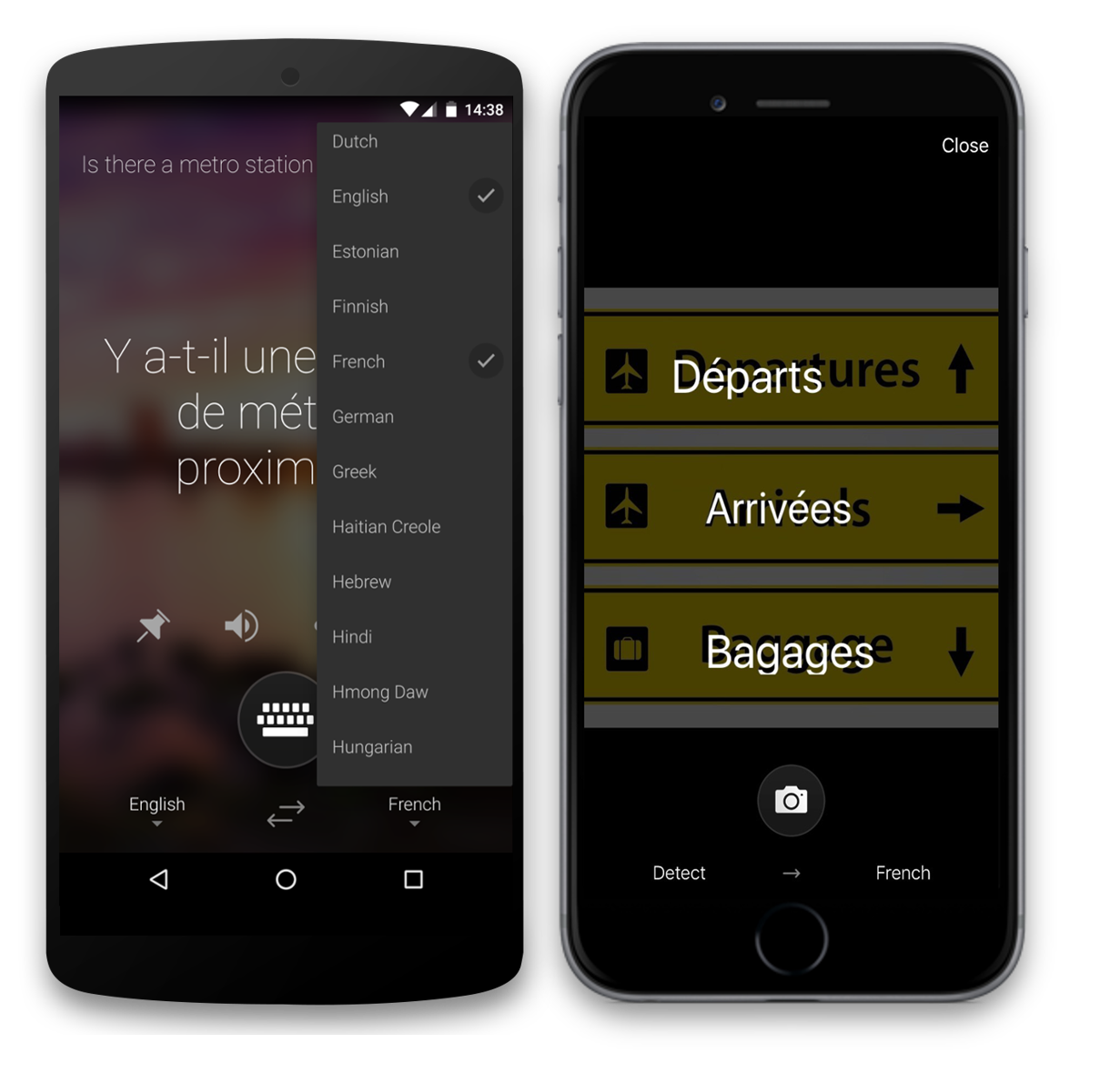Microsoft today updated Microsoft Translator for Android and iOS. The former has received a new AI-powered translation engine, while the latter has gained Optical Character Recognition (OCR) image translation. You can download the latest versions now directly from Google Play and Apple’s App Store.
As its name implies, Microsoft Translator is the company’s translation service, available for Android, Android Wear, Apple Watch, iOS, Windows, and Windows Phone. It supports translation of text, speech, documents, and webpages across 50 different languages (compared to Google Translate’s 103). The Android and iOS apps were the versions released in August 2015, which means they were due for an update.
Android
The Android app now lets you download free language packs that are powered by what Microsoft calls “the world’s first Deep Neural Network-powered offline engine.” The result is “near online-quality translations,” even when you’re not connected to the Internet. Languages currently supported are as follows: Chinese (Simplified), English, French, German, Italian, Polish, Portuguese, Russian, Spanish, and Vietnamese.
Microsoft Translator isn’t new to artificial intelligence; the cloud service has been using machine learning technology for almost a year to power the Microsoft Translator apps, Skype Translator, and Bing Translator. But bringing this technology to offline translations that you can take with you on the go is impressive.
In fact, Microsoft says it ran BLEU tests and found that its new offline language packs were “comparable to the translations you get when connected to the Internet, and significantly better than any offline translation experiences available previously” (including legacy Microsoft Translator offline language packs and competitor’s current solutions). That said, Microsoft did warn that translation quality naturally varies depending on the language and topic.
iOS
The iPhone app now lets you translate text from your camera roll or saved pictures, thanks to OCR support. Instead of typing the text or speaking aloud, you can get a translation right on top of the existing text in the picture.
This is particularly useful when translating signs, menus, fliers, email attachments, social media, and really any image you find online. Microsoft Translator has had image translation in its apps for Windows and Windows Phone since 2010, so landing this capability on iOS is no surprise.
The new functionality is available to Apple users in the following languages: Chinese (Simplified), Chinese (Traditional), Czech, Danish, Dutch, English, Finnish, French, German, Greek, Hungarian, Italian, Japanese, Korean, Norwegian, Polish, Portuguese, Russian, Spanish, Swedish, and Turkish.
What’s next?
Given that the offline translation functionality, albeit in an inferior version, already existed for Windows, we asked Microsoft why the company didn’t deliver this improvement on its own platform first. Unfortunately, the company didn’t explain anything, though we suspect Android’s widespread popularity had something to do with it.
“Microsoft Translator for Windows 8/10 and Windows Phone already has an offline language translation feature, although it currently isn’t powered by the DNN on-device translation image,” a Microsoft spokesperson told VentureBeat. “We can’t comment on future versions of Microsoft Translator offerings.”
Microsoft did, however, say it plans to bring these two features to other platforms “soon.” The goal is to have all of Microsoft Translator apps offering offline translation using AI and image translation capabilities.
VentureBeat's mission is to be a digital town square for technical decision-makers to gain knowledge about transformative enterprise technology and transact. Learn More


